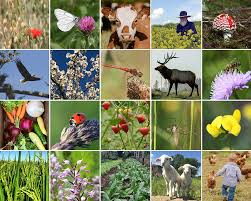Traditionally, ecologists have focused on the concept of ecological diversity, with species diversity being the most commonly used representation. However, it is not the only measure of ecological diversity. Niche width and habitat diversity are also key components.
Niche width refers to the availability of resources to an organism (or taxon) over spatial and temporal scales, indicating the diversity of resources used by an individual or taxon. Habitat diversity, on the other hand, measures the structural complexity of the environment.
While this article primarily focuses on species diversity, it is important to note that many of the methods used to define species diversity also apply to niche width and habitat diversity. Understanding niche width and habitat diversity is crucial for comprehending ecosystem function.
Ecologists have found species diversity challenging to define and measure, which may indicate that it is a “non-concept.” In general, there have been two approaches to measuring species diversity, both of which consider the number of species (species richness) and the relative abundance of individuals within each species (species abundance).
One method involves constructing mathematical indices, known as diversity indices, while the other compares observed species abundance patterns with theoretical species abundance models.
Read Also: How to Extract and Package Snail Slime (Snail filtrate) for Commercial Use
Species Diversity: The Taxonomic Variety of Living Organisms

Species diversity is one of the three principal levels of biological diversity, along with genetic diversity within species and ecosystem diversity. In many environmental assessments, biodiversity is synonymous with species diversity and is measured by the number of species in an area, also known as species richness.
While species are often seen as the fundamental unit in ecology, using the number of species to measure diversity requires addressing several issues. First, there is the choice of taxonomic group, as differences in the species concept and the levels of discrimination in different taxa make it difficult to combine species counts across groups.
Measuring species richness on a global or large regional scale often encounters problems of synonymy, where the same species is given different names in different regions.
Species diversity and stand structure are vital for forest biodiversity since trees provide the basic needs and habitat for other species.
It has been widely accepted that species distribution, structure, and their response to environmental factors are core concepts for ecological study.
Read Also: The Health Benefits of Using Accent Seasoning on your Cooking
Concepts of Species Diversity

1. Species Richness
Species richness refers to the number of different species present in an area. The greater the number of species, the higher the richness. This is the oldest and simplest concept of species diversity, representing the number of species in a community or region.
A significant challenge in this measurement is that it is often not feasible to enumerate all the species in a natural community or region, especially in insect communities or tropical plant assemblages. The more species present, the greater the richness.
2. Heterogeneity
Simpson (1949) proposed a second concept of diversity, combining species richness and evenness. The Simpson’s reciprocal index is represented by the formula:
$$
DI = \frac{1}{\sum_{i} \left(\frac{n_{i}}{N}\right)^2}
$$
Where $N$ is the total number of individuals collected, $n_1$ is the number of individuals of a species, and $DI$ is the Simpson’s diversity index. A high index value suggests a stable site with many different species and low competition (high richness and evenness).
A low index value indicates a site with few potential species, where only a few species dominate. Simpson’s reciprocal index can be used to compare biodiversity at two different locations.
3. Evenness
Species evenness describes the relative abundance of different species in an area (similar abundance indicates more evenness). For many decades, field ecologists have observed that most plant and animal communities contain a few dominant species and many relatively uncommon species.
Evenness measurements aim to quantify this unequal representation in comparison to a hypothetical community where all species are equally common.
Importance of Species Diversity in Ecosystems
Species diversity is essential for maintaining healthy ecosystems. Every species plays a vital role in the ecosystem. For example, bees are primary pollinators, and without them, fruits and vegetables could be at risk, affecting the animals that depend on them and ultimately humans.
Various species not only provide food but also contribute to clean water, breathable air, fertile soils, climate stability, pollution absorption, building materials for homes, disease prevention, medicinal resources, and more. Below are some specific examples.
1. Ecosystem Health and Species Interdependence
Species diversity contributes to ecosystem health. Each species functions like a thread that holds an ecosystem together. If a species disappears, the ecosystem may begin to unravel.
For instance, in the Pacific Northwest, salmon are integral to the ecosystem. They carry rich nutrients from the ocean back to the streams.
When salmon die, these nutrients are consumed by insects, plants, mammals, and birds. If salmon were to disappear, the impacts would be felt throughout the food chain.
Challenges in Species Diversity for Conservation
In this article, species richness cannot serve as the sole criterion for the creation of protected areas. Similarly, species diversity, while valuable, is not the most suitable measure in isolation. Species evenness, however, provides more useful information.
The lower the species evenness, the more susceptible species are to extinction due to anthropogenic impacts. Therefore, it is critical to preserve substantial portions of habitats for endemic, rare, and endangered species, particularly in areas with low species evenness where dominant species are actively harvested.
Restricting economic activities in these areas proves more effective for conserving global species richness than merely protecting biodiversity hotspots.
Read Also: The Health Benefits of Using Accent Seasoning on your Cooking

